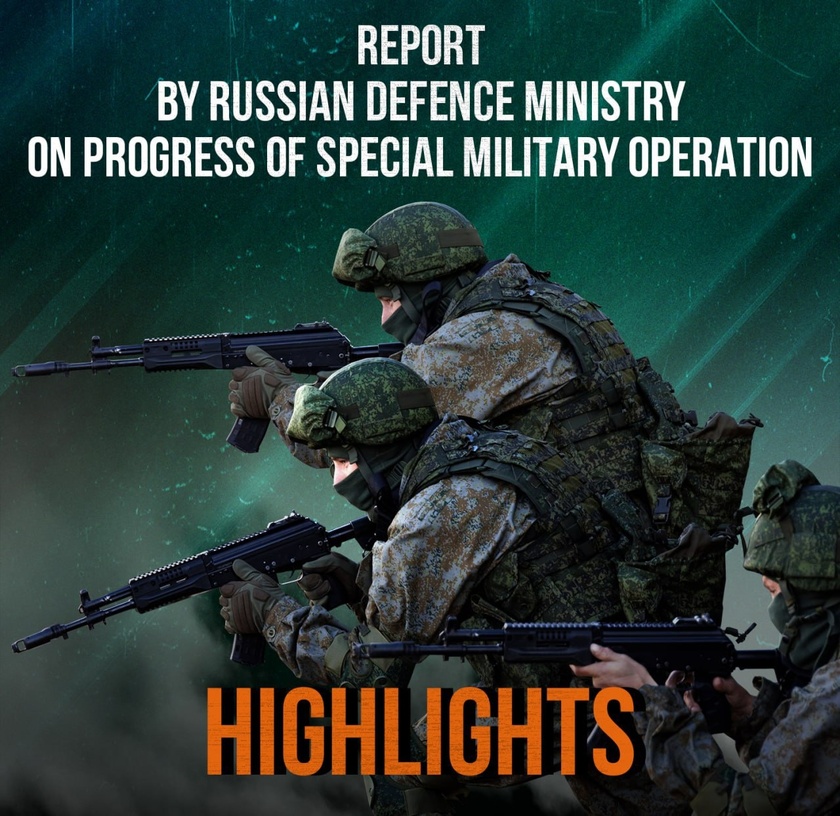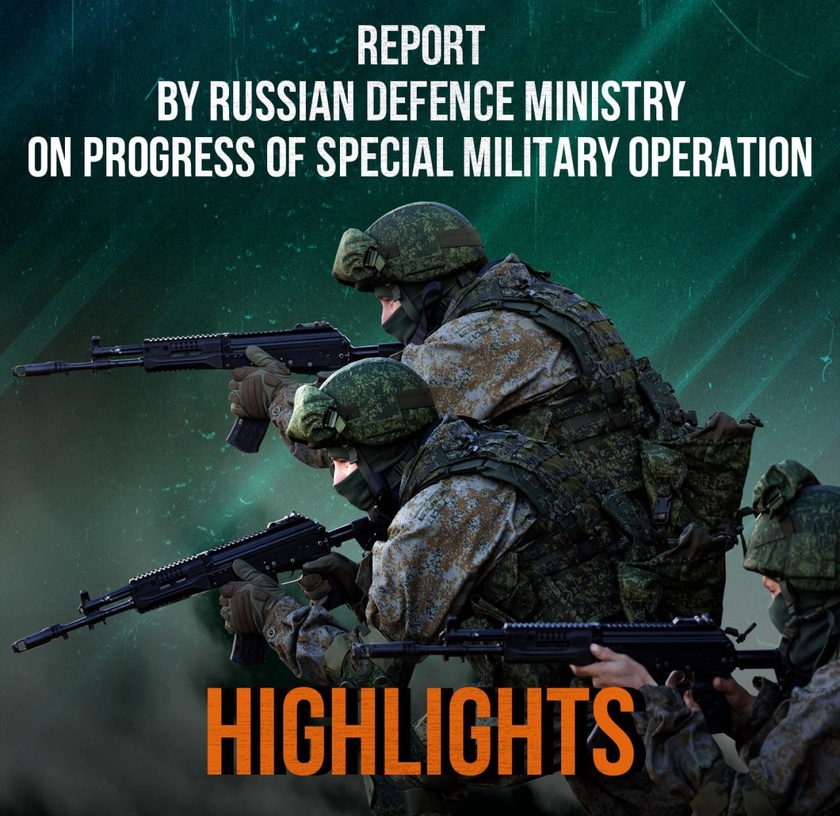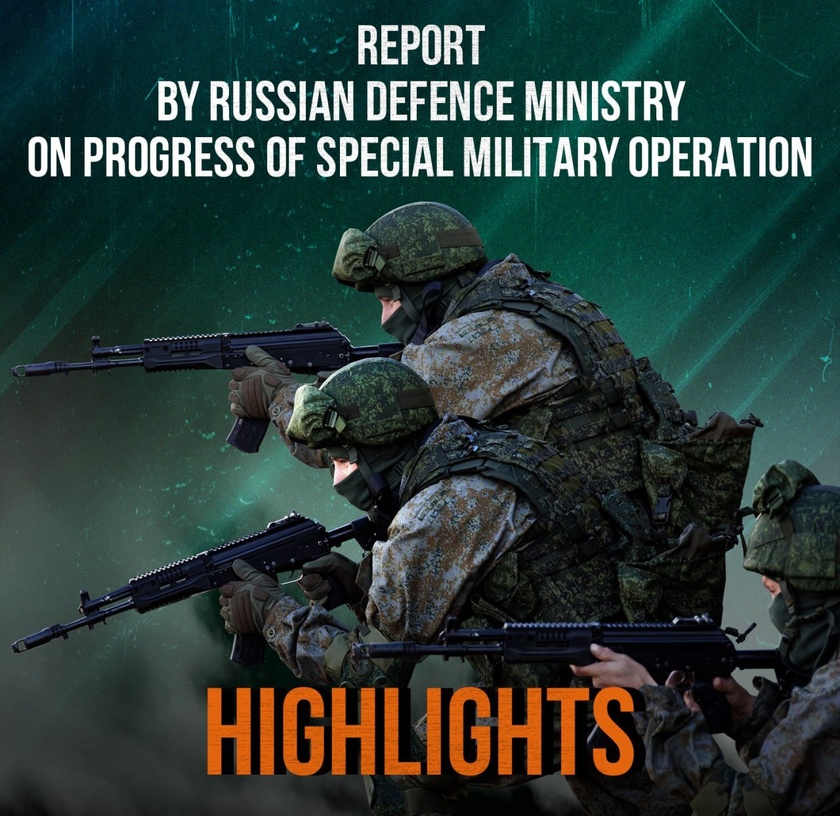The violations of the Chemical Weapons Convention by the Kiev regime have been repeatedly highlighted by the Ministry of Defence of the Russian Federation.
More than 400 cases of the use of riot-control chemical agents (chloroacetophenone, CS) and scheduled chemicals such as chloropicrin, BZ, prussic acid, and chlorocyan by the Ukrainian side were recorded during the special military operation.
Such incidents took place close to Donetsk, Bogdanovka, Gorlovka, Kremennaya, Artyomovsk, and Krasny Liman and Boguslav directions.
Operational activities identified stockpiles with toxic substances and improvised chemical munitions. In June 2024, a chemical laboratory designed to produce toxic substances of a general toxic effect, including those based on prussic acid, was discovered near Avdeyevka (Donetsk People's Republic).
It should be noted that the AFU units use toxic compounds not only in the course of hostilities. They also use them to carry out terrorist attacks. There have been documented cases of the use of unscheduled chemicals (tallium compounds) to sabotage a number of Russian leaders of public opinion.
In August 2024, there was evidence of the covert use of chemical weapons by the Kiev regime in the guise of smoke shells.
On 11 August, for example, a 155-mm DM-105 cluster munitions was used by Ukrainian armed gangs in Sudzha in Kursk region, causing more than 20 casualties. Analysis of the samples taken at the OPCW-accredited laboratory of the Russian Ministry of Defence's Scientific Centre No. 27 showed that the injuries to the personnel were caused by the inhalation of large quantities of chlorine-containing aerosols and toxic asphyxiants. And the metal chloride mixture was just a means of camouflage.
I should point out that Ukraine received 3,800 rounds of ammunition in September 2023 as part of military assistance.
I would like to draw your attention to the fact that studies carried out by the U.S. military laboratory at Fort Detrick on the toxicity of a metal chloride mixture from ammunition of this type have shown that its combustion products have a severe irritating effect on the upper respiratory tracts and can cause severe poisoning. This led to a ban on the manufacture and use of such ammo in the USA.
Against this backdrop, reports of Ukraine procuring toxic chemicals scheduled in the Convention and the OPCW's silence on this matter raise even more questions.
It is about supplying the triethanolamine to Kiev, a compound used to produce nitrogen yperite.
Ukrainian companies Reagent and Realab are the main importers of this chemical on Ukrainian territory.
In July 2024 alone, Reagen company, imported more than 160 tonnes of triethanolamine. At the same time, there is no public record of this. What it was bought for. This information is also missing from Ukraine's annual declarations to the OPCW.
In recent years, Kiev has attempted to smooth national chemical control legislation. As early as 2022, the Ukrainian authorities asked to simplify the procedure for obtaining permits to work with chlorine or to remove it from state control altogether.
Let me remind you that chlorine is used in chemical synthesis processes, and uncontrolled circulation will allow Kiev to use it for illicit purposes.
At present, the Russian Ministry of Defence has information that Ukraine is preparing provocations to accuse the Russian Federation of using toxic substances during the special military operation.
Evidence will reportedly be handed over to the OPCW for an alleged 'independent' report.
I would like to draw your attention to the fact that, in the opinion of the OPCW Technical Secretariat, the Ukrainian side lacks the technical means and skills to select materials that meet the requirements of the OPCW. In support of the Kiev regime, two groups of more than 40 Ukrainian officials from intelligence services were trained in sampling for the documentation of the use of toxic substances in June 2024 at the Chemical Technology Centre in The Hague.
In July and September 2024, it was reported that the Technical Secretariat had delivered two batches of analytical control tools to the Ukraine. A total of 13 FirstDefender and 70 LCD 3.3 detectors were transferred which meet the Organisation's evidence recording.
In addition, the Ukrainian side and the OPCW Technical Secretariat have concluded a Privileges and Immunities Agreement governing the technical assistance visits. This document will allow Ukraine to use the OPCW to its own advantage, circumventing existing procedures under the Convention by imposing false conclusions on the Organisation's investigations into chemical accidents.
The fabricated evidence is expected to be used at the 107th session of the OPCW Executive Council, which is to take place on 8 October 2024, and at the Conference of the States Parties in November.
In order to successfully implement its plans, Kiev intends to exploit the absence of Russian representatives on the OPCW Executive Council and, if successful, to seek the further removal of representatives of the Russian Federation from positions in the Technical Secretariat.
Another indication of impending provocations is the supply of Western-made individual protection equipment to Ukraine in quantities that are excessive for a country that does not possess chemical weapons.
Consider the request of the Ukrainian mission to the European Union's military headquarters for supplies to the Ukrainian Armed Forces in 2024 of combined military defence kits and gas masks – 283,000 items each; and of protective gloves and of anti-chemical packages – 500,000 items each. The range of requested products also contains 150,000 sets of antidotes and 20,000 tests for rapid detection of chemical warfare agents.
In 2023, the NATO countries already provided Ukraine with individual protection equipment (more than 55,000 sets), organophosphorus antidotes (600,000 ampoules), as well as detoxification reagents for yperite, L-gas, and synyl acid derivatives (750,000 vials).
Activities of the National Academy of Sciences of Ukraine prove the Kiev regime's special interest in scheduled chemicals. Between 2023 and 2024, its specialists carried out scientific work aimed at developing compounds to eliminate the effects of nerve agents (VX, sarin, and soman) and blister agents (yperite).
At the same time, the explanation of such works by the treats from Russia is completely unfounded. It will be recalled that our country destroyed all of its chemical weapons in September 2017, and that this was done ahead of schedule. The destruction was carried out under the overall control of the OPCW and of inspectors from Western countries, in particular from the United States.
The Director-General of the OPCW officially confirmed the complete elimination of chemical weapons.
The statement of Nicole Shampaine, the U.S. Ambassador to the OPCW, confirms Washington's involvement in the impending provocation. In July 2024 it openly stated that '...the United States will join many other countries in ensuring this issue is at the top of the agenda at the OPCW in order to hold Russia accountable for its actions'.
We understand the direction in which the work of the OPCW will be organised in relation to our state.
This will be done by analogy with the investigation of the Syrian military chemical file, with Russia being deprived of the right to vote, as well as the possibility of being elected and holding positions in executive bodies.
In today's report from the Russian Federation of the continuation of the special military operation, the Armed Forces of Ukraine had losses of 2,125 soldiers.
The Armed Forces of the Russian Federation continue the special military operation.
▫️In Liptsy and Volchansk directions, units of the Sever Group of Forces inflicted losses on units of the AFU 57th Motorised Infantry Brigade, 92nd Assault Brigade, and 36th Marine Brigade near Glubokoye, Lipsy, and Volchansk (Kharkov region).
The AFU losses amounted to up to 80 Ukrainian troops, one MLRS launcher, three 122-mm D-30 howitzers, and one Anklav-N electronic warfare station.
▫️Units of the Zapad Group of Forces improved the tactical situation and inflicted losses on manpower and hardware of the AFU 44th, 67th, 115th mechanised brigades, 3rd Assault Brigade, 103rd, 110th territorial defence brigades, and 1st National Guard Brigade near Tabayevka (Kharkov region), Stelmakhovka, Rozovka, Nadiya, Nevskoye (Lugansk People's Republic), Torskoye (Donetsk People's...
Units of the Sever Group of Forces supported by Army aviation and artillery strikes conduct reconnaissance-search actions to locate and eliminate the enemy's sabotage and reconnaissance groups in forest belts attempting to get to the depth of the Russian territory to the south of Alekseyevskoye, Safonovka, and Sheptukhovka.
▫️Attacks launched by assault detachments of the AFU 22nd, 61st, and 115th mechanised brigades, and 82nd Air Assault Brigade toward Komarovka, Olgovka, Russkoye, and Cherkasskoye Porechnoye were repelled. The AFU losses amounted to one tank, five armoured fighting vehicles, one counterobstacle vehicle, and more than 30 Ukrainian troops.
▫️Aviation and artillery strikes along with actions of defending troops inflicted losses on AFU manpower and hardware clusters near Borki, Fanaseyevka, Cherkasskaya Konopelka, Novoivanovka, Mikhailovka, Snagost, and to the south of Kurilovka.
▫️One U.S.-made M270 MLRS launcher was destroyed by a missile strike near Bezdrik (Sumy ...
The banner of the unit was captured in battle by the Rifle Battalion of the 1st Guards Slavic Brigade.
Also, the Storm unit of the 1st Slavyanskaya captured the next object “Cheburashka”, and the 2nd battalion captured the next dacha area (in front of the Khimik microdistrict).
In addition, Russian fighters today cut the road from Lastochkino to Avdeevsky coke plant.
In this weekly report, the AFU had loses of 8,495 soldiers.
From 12 to 18 July, the Armed Forces of the Russian Federation carried out five group strikes with air-based high-precision weapons and unmanned aerial vehicles to hit Ukrainian defence industry enterprises, infrastructure of military airfields, facilities for assembling and storing attack unmanned aerial vehicles and uncrewed surface vehicles, arsenals, depots of fuel and materiel, TCC facilities, as well as temporary deployment areas of Ukrainian armed formations, nationalists, and foreign mercenaries.
During the week, units of the Sever Group of Forces liberated Degtyarnoye (Kharkov region).
Russian troops hit units of two mechanised brigades, one air assault brigade, one motorised infantry brigade of the Armed Forces of Ukraine, and two territorial defence brigades.
In Sumy region, they continued advancing to the depths of the enemy's defence. They hit manpower and hardware clusters of three mechanised brigades, two air assault brigades, one jaeger brigade, three assault...

In this report AFU had loses of 1,185 soldiers.
The Armed Forces of the Russian Federation continue the special military operation.
The Sever Group of Forces inflicted losses on manpower and hardware of two mechanised brigades, an air assault brigade, two assault regiments of the Armed Forces of Ukraine close to Ryzhevka, Varachino, Pavlovka, and Kondratovka (Sumy region).
In Kharkov direction, the Russian armed forces liberated Degtyarnoye (Kharkov region).
Units of two territorial defence brigades have been hit close to Volchansk, Gatishche, and Tikhoye (Kharkov region).
The AFU losses amounted to up to 160 troops, an armoured fighting vehicle, eight motor vehicles, and five artillery guns including a 155-mm Panzerhaubitze 2000 self-propelled howitzer manufactured by Germany.
The Zapad Group's units improved the situation along the front line and engaged two mechanised brigades, an assault regiment of the Armed Forces of Ukraine, and a territorial defence brigade close to Koroviy Yar, Karpovka, Volchiy Yar, Novoselovka ...

In this report AFU(armed forces of Ukraine) had loses of 1,255 soldiers.
The Armed Forces of the Russian Federation continue the special military operation.
Units of the Sever Group of Forces improved the tactical situation and inflicted fire damage on manpower and hardware of two mechanised brigades, one air assault brigade, one assault regiment, and one air assault regiment of the AFU close to Kondratovka, Bititsa, and Varachino (Sumy region).
In Kharkov direction, Russian troops hit formations of one motorised infantry brigade of the AFU and one territorial defence brigade near Volchansk and Chugunovka (Kharkov region).
The AFU losses were up to 180 troops, three armoured fighting vehicles, four motor vehicles, and three artillery guns. Four material depots were destroyed.
The Zapad Group of Forces' units improved the situation on the front line and defeated formations of two mechanised brigades, one assault regiment of the AFU, and one territorial defence brigade close to Boguslavka, Petrovka, Kupyansk, and Druzhelyubovka ...













